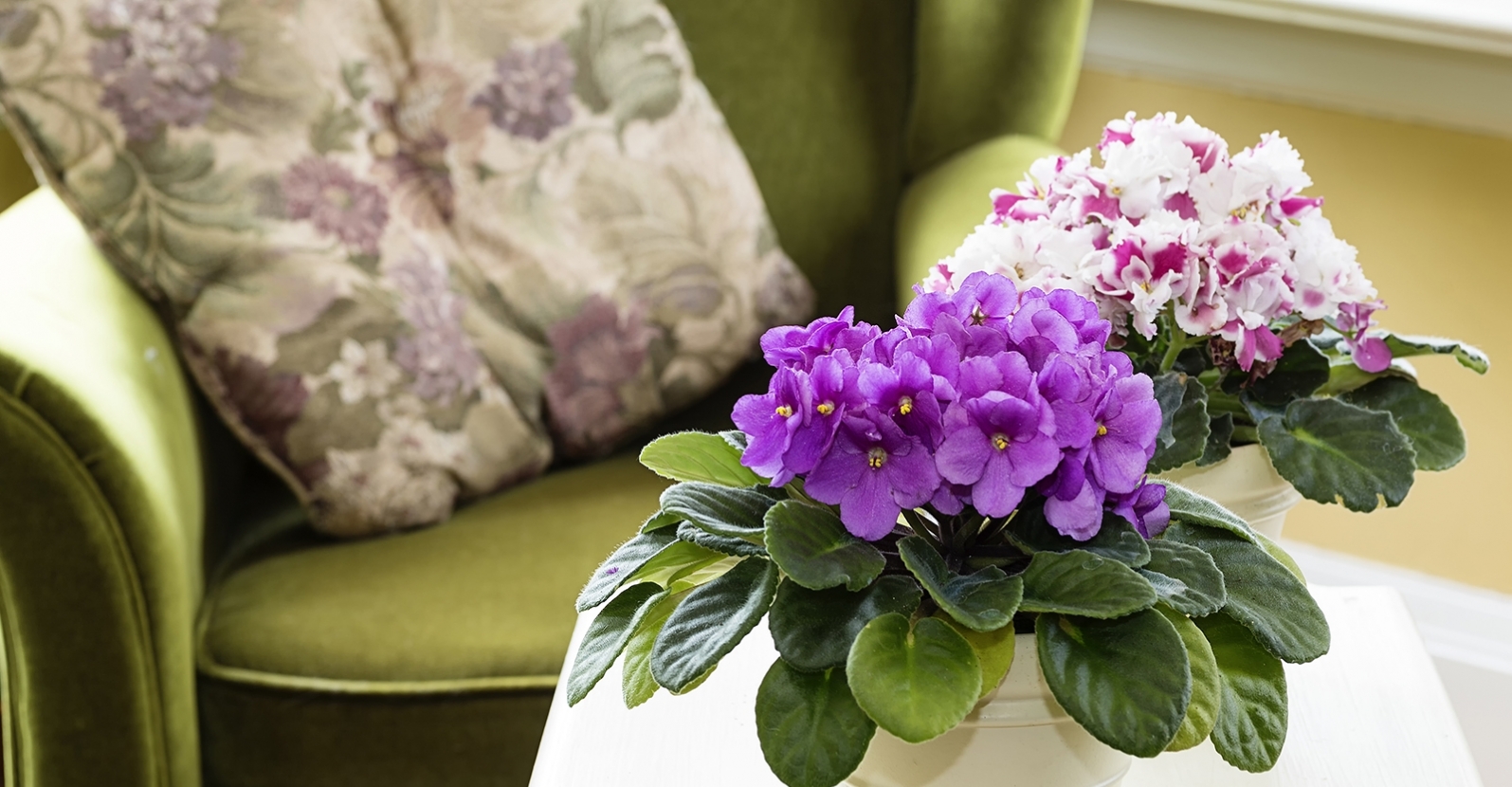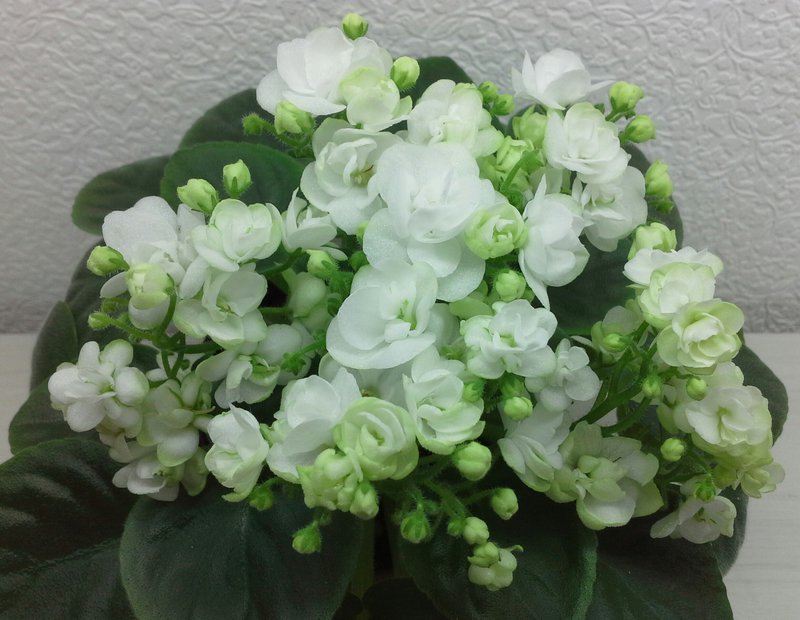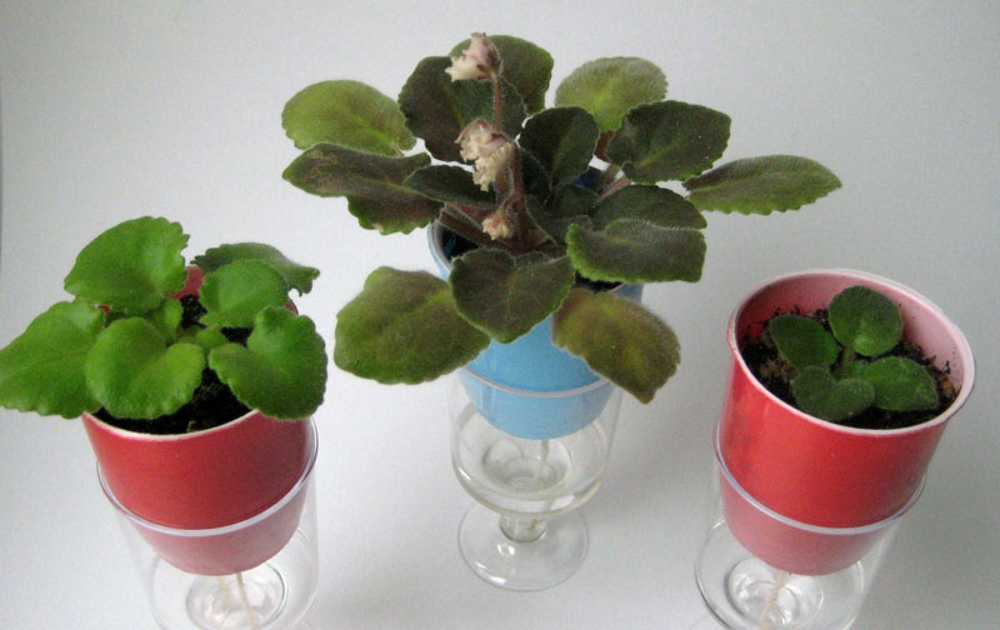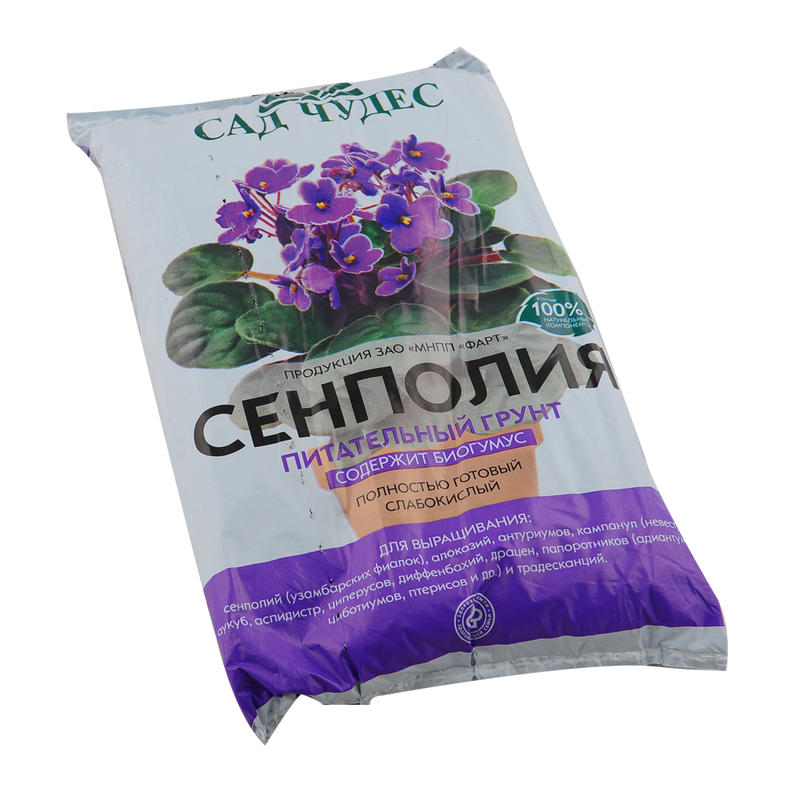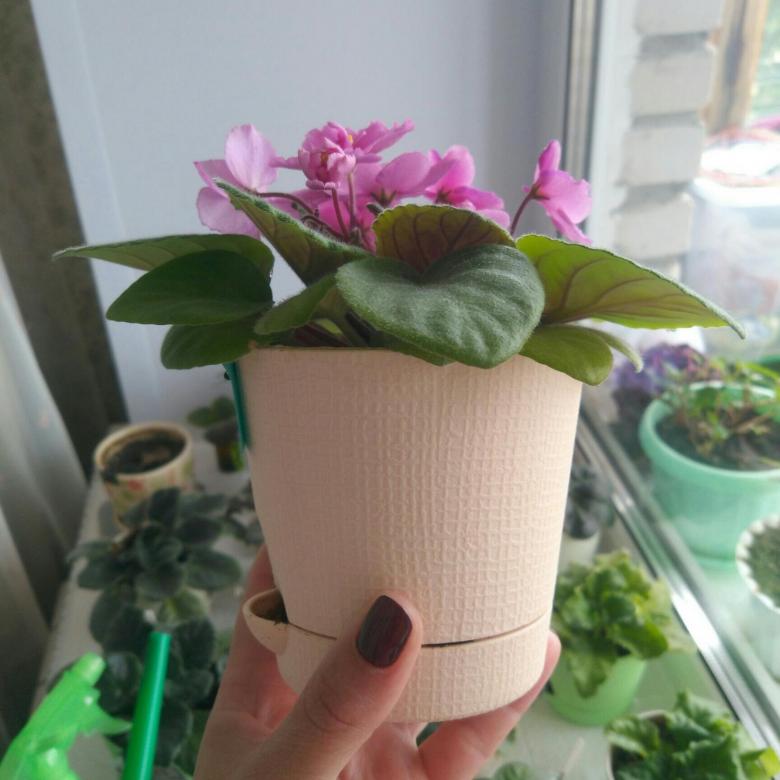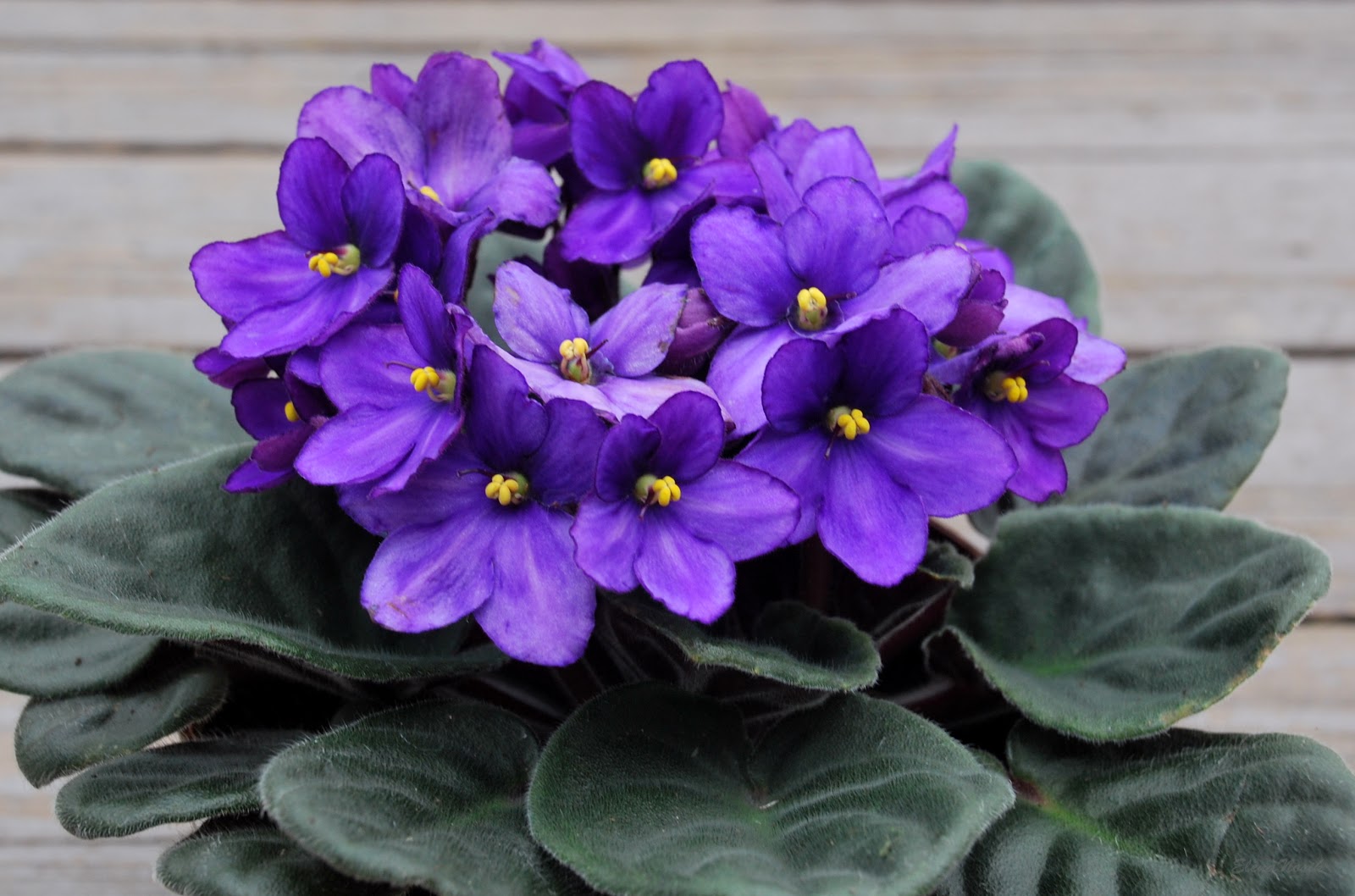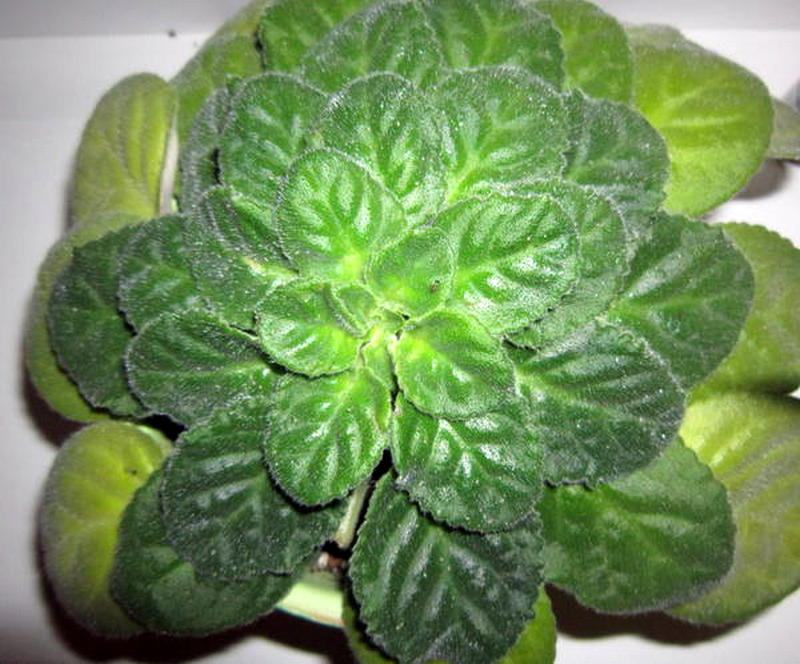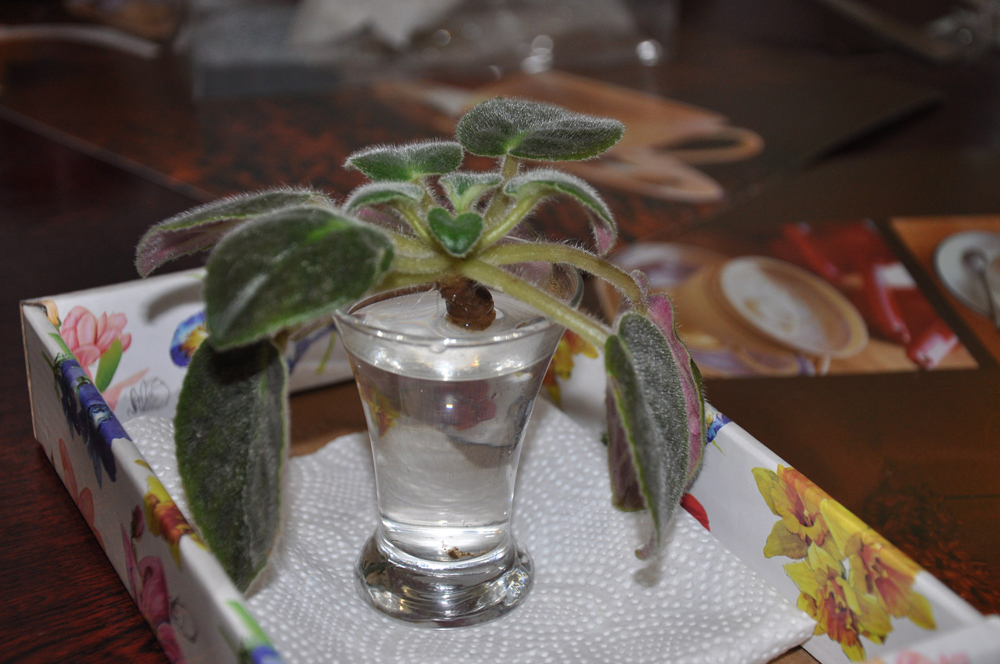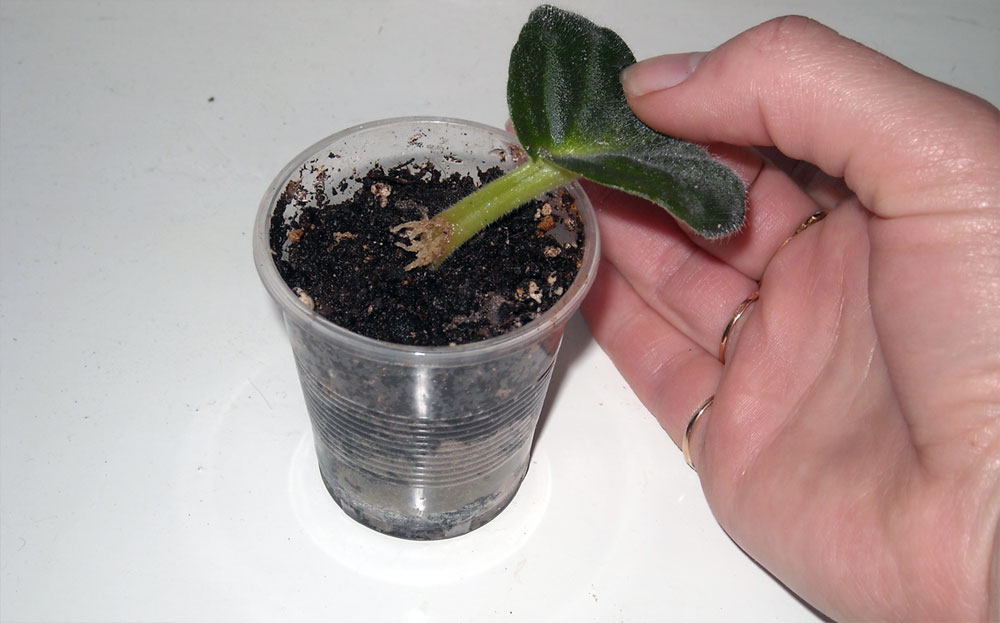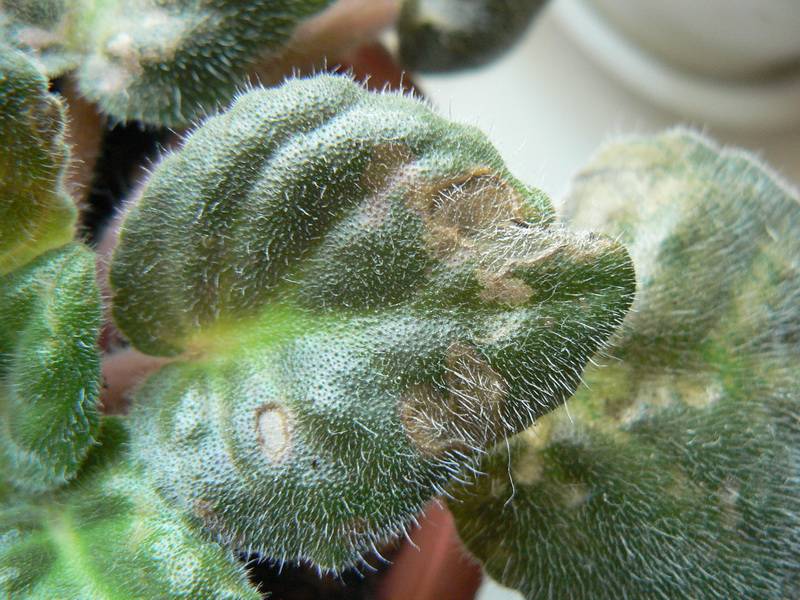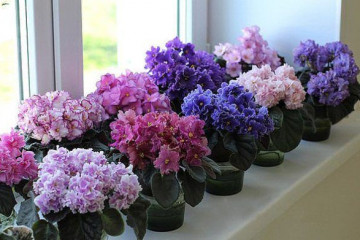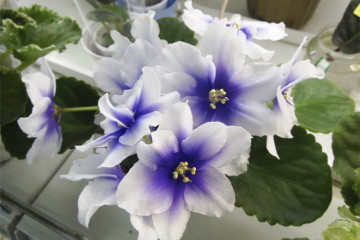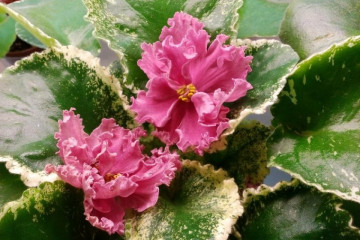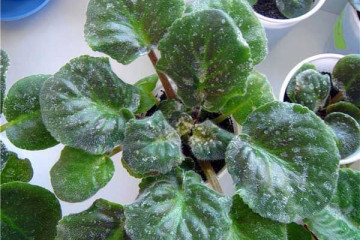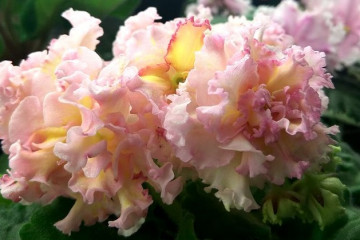Violet. Home care
Content:
People often use flowers to decorate their environment. Among them are violets - plants with a beautiful color. Moreover, they can be grown both on the street and at home.
What is violet
The uzambar violet, or saintpaulia, is a whole genus of flowers that belongs to the biological family of the Gesnerievs. It was opened by the scientist Saint-Paul, which is where one of the names came from.
Can i keep her at home
Violets are often seen in gardens. These are small, but quite abundantly flowering plants. Flowers on them are located in the middle of the rosette with a hat. They can be grown not only on the street (where, by the way, they survive only one summer season). Saintpaulias have long earned the love of the people; for a long time they have been grown as potted indoor crops.
Planting and caring for the uzambar violet at home requires compliance with a number of specific conditions.
Violet at the beginner grower
Some believe that Saintpaulia is only the lot of an experienced grower. With proper preparation, you can start floriculture with them. Special attention should be paid to the choice of the variety. They exist as follows:
- Collectible;
- Feathery;
- Industrial;
- Ampelny.
Indoor violets of industrial varieties are more suitable for beginners than others. These are the flowers that require minimal attention and energy. They are the ones most in stores - they are the cheapest to grow.
Varieties suitable for beginners
Among industrial Saintpaulias, the beginner is especially recommended:
- Ballet snowcone. This variety, also called Snowflake, looks very elegant. During its flowering, a scattering of small white double flowers appears.
- Optimara Connecticut. Optimara Connecticut is a violet that can be considered a classic. Quite large purple flowers with a straight edge are found in many homes.
- Troika (Trojka). It is difficult to confuse triplets with other varieties. They are distinguished by double colors. Moreover, it is on three petals that the gradient will be more noticeable than others.
All these varieties tolerate well the mistakes and shortcomings of novice florists, therefore it is from them that it is advised to get acquainted with violets at home.
Caring for violets at home
For a plant such as a violet, home care must take into account a number of its requirements. This plant is not from Russian latitudes, therefore special conditions must be created in the apartment.
Temperature
Saintpaulia is the flower that does not like both cold and heat. During the flowering period, the optimum temperature for her is 20-22 degrees during the day, 18-20 ° C at night. During the dormant season, a gradual decrease in temperature to 16-18 ° C is recommended.
Avoid sudden temperature changes. From this, leaves may begin to rot, buds and flowers will die.
Lighting
Saintpaulia loves warmth and light. At the same time, the plant is quite delicate, therefore, the pot with it must be removed from direct sunlight. Well, the violet will be on the windowsill of the west or east window. From the south side of the world, the Saintpaulias will be a bit too much. For some varieties, a slight darkening with a tulle curtain will work. It is best to avoid growing this flora in these areas altogether.
Watering
It is imperative to water the violets correctly - they cannot stand both excess moisture and overdrying. Optimally, watering is carried out twice a week, through a sump, with settled water at room temperature.
To make life easier for a florist, you can use wick watering of violets. It is organized like this: a thin cord is inserted into the bottom of the pot. The other end of the cord is lowered into a lower-level container of water. According to the laws of physics, water will flow through the wick into the pot by itself, and its amount will change according to the temperature regime of the room. For the wick, it is best to take synthetic materials - they conduct moisture well and are more resistant to decay.
This irrigation method is not suitable for all plants, but ideal for Saintpaulias. It is convenient for travelers and busy people. In doing so, consider the following:
- It is important to choose the correct diameter of the cord (from 1.5 mm to 5 mm) and the place of organization of wick irrigation. Excess moisture will lead to the death of the plant.
- In winter, you need to think about how to do so that the water does not cool too much - Saintpaulia does not tolerate cold water either.
- The soil must be loose.
Spraying
Violet is a moisture-loving flower, while it does not tolerate water on its leaves and flowers. Therefore, they should not be sprayed under any circumstances. It is allowed to shower with water at room temperature once every two months. After it, it is imperative to allow excess moisture to drain.
Air humidity
The humidity of the air is important for Saintpaulias, therefore it is recommended to keep a container of clean water next to them so that it evaporates naturally.
By the way, the kitchen climate is usually great for violets. Most often there is more humid air, which often does not need to be additionally humidified.
The soil
Caked, dense soil is not suitable for Saintpaulias. She needs soft, loose earth. They "breathe" the roots more actively than other plants, so it is imperative to ensure that the soil retains its qualities. By the way, it is thanks to her that wick irrigation is suitable for this flora.
Usually the store has a separate primer for violets. If not, do it yourself like this: vermiculite, perlite and peat soil for indoor plants are taken in equal proportions and mixed.
Top dressing
Saintpaulia should definitely be fed. This is done exclusively during the period of flowering and active growth. This is not necessary during the dormant season.
When a plant is just releasing leaves, it needs more nitrogen. To make it bloom better, you need to fertilize it with phosphorus and potassium. That is why the seedling needs to be fed with nitrogen fertilizers; phosphorus-potassium fertilizers are recommended for adult flora.
Pot
This type of flower has a great need for root respiration. That is why there must be perforations at the bottom of the pot - holes for air. To prevent soil from spilling out through them, usually a thin layer of synthetic fabric is laid between the pot and the ground.
The pot must be suitable for the size of the plant. A young seedling is comfortable in a container of 5-6 centimeters.Adult flowers have their own requirement - the pot should be three times smaller than the rosette of the flower. To pick everything right, you need to know what size it is:
- Ultra-small - rosette diameter up to 7 centimeters;
- Miniature - 8-20 centimeters;
- Medium - 21-40 centimeters;
- Large - more than 40 centimeters.
Location
It is imperative to provide for some more points that are extremely important for this flora:
- The pot with it must be protected from drafts;
- Violet is not a place next to a stove or radiator during the heating season;
- Also, it should not be kept near a sink, where it could be splashed with water.
Plus, these colors have one feature: they do not tolerate touch and frequent changes of places.
When and how violets bloom
The difference between this African flora when keeping a house is that many of its varieties can bloom all year round. If not, then her dormant period is quite short. However, it depends on the variety.
Some types of Saintpaulias are ready to release flower stalks one after another under suitable conditions. Others stop blooming for a period of one to three months. Others bloom once a year, but abundantly. There is no consensus on what to do with the year-round blooming uzambar violet. They all share:
- You can move the pot to a less lit place. This will cause the flower to leave on its own for a dormant period.
- You can cut off all the flower stalks within two to three months, without letting them bloom.
- You don't have to do anything. If the saintpaulia looks healthy and is working hard to release at least one flower, she may be enjoying the conditions.
If the violet does not bloom
The opposite situation also happens: when the plant does not want to bloom. If the question of why violets do not bloom haunts you, you need to check if this is the problem:
- Lack of light. The plant perceives the lack of sun as a natural cold period and “falls asleep”. For normal flowering, you need a daylight hours of at least 12 hours a day.
- Improper fertilization or lack of fertilization. If you feed the violet with nitrogen, it will not bloom - this process requires another feeding. This also happens if the flower is not fed at all.
- Poor watering. Overdrying the soil or watering with cold water will not stand saintpaulia.
- The pot is too big. Its flora will try to occupy the whole, releasing leaves. Flowers will have to wait for a long time.
- Loose soil. Even if it was first selected correctly, over time the earth is depleted, caked.
How to increase the number of colors
Many people love the color of the violet. Experienced flower growers will advise how to care for Saintpaulia to bloom for a long time and abundantly. She needs:
- A place well lit by indirect rays of the sun, if necessary - additional lighting;
- Nearby there is a capacity with water and no batteries;
- Watering with moderately settled warm water;
- Timely fertilization with potassium-phosphorus fertilizing;
- Suitable pot size;
- Lack of touching delicate leaves and petals;
- Permanent place, no drafts.
Violet transplant
The flower grower will note that the plant begins to grow and bloom poorly over time. This is because it is becoming obsolete. On average, every three years, a violet bush needs to be "rejuvenated", that is, transplanted by renewing the roots. The following is a step-by-step instruction on how to do it correctly:
- A plant is pulled out of an old pot, gently shaken off the ground.
- Cut off the root with a sharp knife, retreating from the rosette of leaves about 3 centimeters. The cut can be sprinkled with charcoal powder.
- If the remaining stem is too hard, then a dense crust is cut off from it.
- It is recommended to remove the lower old leaves from the outlet.
- The rest are placed in water, but so that only the cut edge is in it, but not the leaves. All this is covered with a plastic box, creating a greenhouse.
- The flower will take from days to five to release new fresh roots.
- When they grow up a little, they can be transplanted into a pot with fresh fertilized soil.In this case, nitrogen fertilization is required.
On average, after 2-3 months, the rejuvenated plant will bloom again.
Reproduction of violets at home
Many people plant violets at home. This is not as difficult as it might seem at first glance.
Using seeds
You can grow saintpaulia from seeds. This is done like this:
- The seeds are laid out in a shallow container with moist soil. A greenhouse is created there, which needs to be regularly ventilated and watered.
- When the seeds sprout, they can be dived - planted in a container deeper. You just need to be careful - the roots of the flower are very delicate and thin. When the seedling gets stronger, it is ready to be transplanted into a pot.
Through cuttings
Reproduction of violets from a cutting, that is, from a leaf, is more common. It is cut off with a sharp knife and rooted in water with an activated carbon tablet. The container is covered with polyethylene (perforated to remove condensation). When the leaf takes root, it can be transplanted directly into the pot. At the same time, for the first time, he also needs to arrange a greenhouse.
Other ways
You can also breed an uzambar violet in other ways:
- Children. The baby is a shoot from a violet cutting with its roots. It is recommended to choose only one, the largest baby, cut it off with a knife and put it in a separate pot.
- Stepsons. The stepson, or daughter rosette, is a process that originates in the axils of the leaves. It spoils the appearance, so it should be removed. The removed stepson can be rooted in water, then transplanted into your pot.
Problems of violets in pots
Like all life on planet Earth, Saintpaulias have their own problems. They can get sick or suffer from pests.
Diseases
The problems (and their reasons) for this flower may be as follows:
- Rot at the roots. It appears due to waterlogging of the ground or damage to the roots by a parasite. The way out is plant rejuvenation.
- Leaf spot. Occurs due to sunburn or due to the ingress of water on foliage.
- Powdery mildew. Fungal disease that appears due to violations of the rules of care. It is treated with specialized preparations and temporary isolation from other flowers.
- Late blight. Fungus that occurs due to excessively high humidity. It is treated with rejuvenation.
Pests
Saintpaulia can suffer from living things - parasites:
- Nematode. A pest that feeds on plant sap. There is no salvation from him, the flower must be destroyed, and the pot must be disinfected.
- Mite. The most common parasite. The leaves are entangled in its web, become brittle. Get rid of it with a specialized tool.
- Sciarids. Due to the high humidity, their larvae start at the roots, midges begin to eat the leaves. Destroyed by insecticides.
For a plant such as a violet, care at home needs careful attention. Not to say that she needs something particularly difficult. It is not for nothing that it is her more often than other colors that can be found in houses and apartments.
